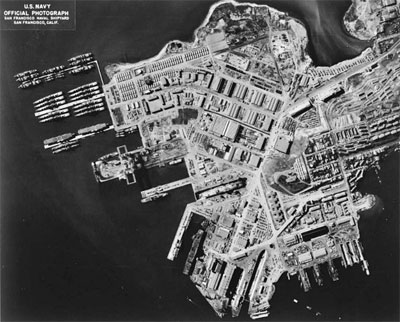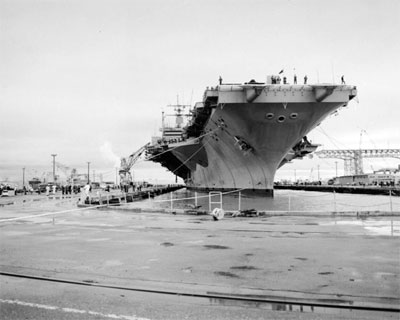National Register of Historic Places in San Francisco
Drydock 4 Hunters Point Naval Shipyard
Spear Avenue and Morrell Street
Completed 1943
The Japanese attack at Pearl Harbor in December 1941 brought the United States into World War II. The Navy purchased the dry docks and marine repair facilities from Bethlehem Steel Yard at Hunters Point and built the largest graving dry dock on the west coast.
After World War II, Dry Dock No. 4 was continuously used to dock a large variety of Navy capital ships, and in some instances those of foreign nations, for repair, overhaul, maintenance and conversion.
In 1964, Hunters Point Naval Shipyard and Mare Island Naval Shipyard were combined under a single operational command known as the San Francisco Bay Naval Shipyard which was the largest shipyard complex in the world.
In 1970, the two shipyards returned to autonomous operations.
Hunters Point Naval Shipyard was subsequently disestablished by the Navy. Navy ship repair operations were terminated in 1974.
From 1976 to 1986, the Navy leased the shipyard to Triple A Machine Shop. Dry Dock No.4 was continuously operated by Triple A as the primary repair facility during this period.
The heaviest ship ever docked is believed to be the T T STUYVESANT, a commercial tanker, in 1978. The heaviest Navy ship to be docked was the aircraft carrier USS KITTY HAWK.
Upon termination of the lease to Triple A Machine Shop, title to shipyard passed to the Naval Station Treasure Island, with actual ownership of Dry Dock No. 4 passing to Mare Island Naval Shipyard in 1987. After August 1989, no dockings of Navy ships occurred, and the drydock was deactivated.
Source: Adapted from Historic American Engineering Record Survey HAER CA-181-A, April 1994.

